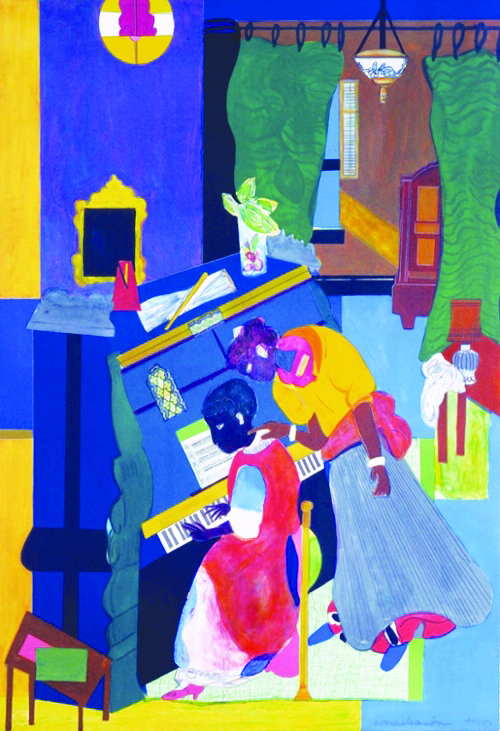On Thursday, Feb. 8, the Emily Lowe Gallery held a reception for its new exhibition, featuring a presentation on the pieces and artist by Jennifer Henton, a professor of English.
“I think what I’d say is that Bearden’s work explores the African American story in ways that are both intimate and universal. His work applies to everyone, but through the specific experiences of blacks in America,” Henton said.
Walking into the new exhibition by Romare Bearden at the Hofstra University Museum, viewers take in a striking compilation of collages. Mirrored with the right-most wall of the gallery, five images are hung up in pentagonal fashion, copied and printed in different ways, including “The Train” and” The Family.” Featuring the painterly works of Bearden and the artist’s experimentation with different lithographs, each compilation compels viewers to take a moment to consider the variances in each print.
Ultimately, the configuration, depicting African American life, creates a contradictory effect upon viewers, juxtaposing a sense of familiarity and the displacement of Bearden’s differentiated experiments. The same subjects, rendered in dissimilar fashion, catalyze a unique creative experience by asking us to pick and choose the elements we hold constant – either the subjects rendered, colors used or, among other elements, the painted abstractions accompanying each print.
In the curator’s statement, Karen Albert, the deputy director and chief curator of the museum, said, “Bearden viewed printmaking as an outlet for experimentation and as a way to reach a larger audience, since prints are created in multiples and allow many individuals to own the same image.”
The late artist was active in the ‘60s as part of the “Spiral Group,” an art collective focused on experimentation and social work through art. This career was influenced in part by his background in the Harlem Renaissance during which his household served as a meeting place for various artists and authors.
Summarizing his own philosophy on social activism via art, Bearden said, “I can’t divorce myself from the inequities that are around me.”
In the exhibition’s catalogue, Nancy Richner, the museum director, described Bearden as “the consummate Renaissance man … a 20th-century American artist, activist, athlete, author, soldier, scholar, museum founder, friend and mentor” whose multifaceted character reflects itself in the works displayed at the museum’s exhibition.
“I work out of a response and need to redefine the image of man in terms of the Negro experience I know best,” Bearden said. Throughout the exhibition, works such as “Mother and Child” and others from the Odysseus Suite reinterpret classical images in terms of the artist’s own personal experiences. Bearden, through the process of print and collage, claims the classics for himself, blending, in Richner’s words, elements of the “universal and personal.” The Museum of Modern Art held a retrospective of his work in 1971. Bearden passed away in 1988.







